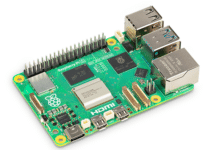Here’s an explanation of what containers and virtual machines are, how they work and compare, and when to use each technology in modern software deployment.
Many people ask, “Is a container just a lightweight version of a virtual machine (VM)?” While that may sound accurate at first, it is not correct. Containers and virtual machines may seem similar because both help in running applications in isolated environments, but they work in very different ways.
Teams often rely on these technologies to build, test, and deploy applications efficiently. Virtual machines and containers are powerful tools, but choosing the wrong one for a specific use case can lead to poor performance, higher costs, or security issues.
That is why it is important to clearly understand how these two technologies differ. Knowing the differences helps developers, IT managers, and DevOps teams choose the right solution based on the goals of their project.

What is a virtual machine?
A virtual machine (VM) is a software-based environment that behaves like a physical computer. It allows you to run an operating system and applications just as you would on a regular desktop or server. VMs are created and managed using a tool called a hypervisor, which enables multiple virtual systems to run on a single physical machine.
How VMs work
A hypervisor sits between the hardware and the virtual machines. It allocates system resources such as CPU, memory, storage, and network access to each VM. Every VM includes a guest operating system, which is independent of the host system’s OS. This allows VMs to run different operating systems on the same physical server.


For example, you can run a Linux VM on a Windows host machine. The hypervisor ensures each VM is isolated and protected from the others, providing a high level of separation. The benefits and limitations of VMs are listed in Table 1.
Table 1: Benefits and limitations of VMs
|
Benefits of VMs |
Limitations of VMs |
|
Run different operating systems on the same hardware. |
Each VM includes a full OS, consuming more CPU and memory. |
|
Run older software not compatible with modern systems. |
VMs take more time to start due to full OS load. |
|
Create isolated and resettable testing |
Scaling many VMs requires advanced tools and infrastructure. |
|
Easy to back up and restore entire VMs quickly. |
Large disk images increase storage needs and costs. |
What is a container?
A container is a lightweight, standalone unit that packages an application along with all its required libraries, configurations, and dependencies. Unlike virtual machines, containers share the host operating system kernel, which makes them faster and more efficient. They create a consistent environment for running applications across different platforms.
How containers work
Containers run on top of a container engine such as Docker, containerd, or CRI-O. Instead of virtualising hardware, they leverage the host’s OS and isolate processes using Linux features like namespaces (for separation) and control groups (cgroups) for resource management.
This allows multiple containers to run on the same machine without the overhead of separate operating systems. Containers can start and stop almost instantly, making them ideal for tasks that require quick deployment or scaling. Their benefits and limitations are listed in Table 2.
|
Benefits of containers |
Limitations of containers |
|
No need for a full OS in each instance, reducing memory and CPU usage. |
Share the host OS, offering less isolation than VMs. |
|
Launch in seconds, speeding up development and deployment cycles. |
Limited by the host OS (e.g., Linux containers on Linux). |
|
Run consistently across development, testing, and production environments. |
Improper setup can expose vulnerabilities or host access. |
|
Ideal for microservices and large-scale deployments with tools like Kubernetes. |
Managing storage across container lifecycles can be complex. |
|
More containers can run on the same hardware than VMs. |
Container networking can require additional configuration and monitoring. |
Table 2: Benefits and limitations of containers
Before diving into deployment, it’s important to understand how containers and virtual machines differ at a fundamental level. Table 3 highlights the key differences to help you choose the right solution for your environment.
|
Aspect |
Containers | Virtual machines |
|
Architecture |
Containers share the host operating system and package only the app and its dependencies. |
Virtual machines run a full guest operating system on top of a hypervisor. |
|
Performance |
They are lightweight, use fewer resources, and start almost instantly. |
VMs use more resources and take longer to boot because they run a full OS. |
|
Portability |
Containers move easily between environments as long as the host OS is compatible. |
VMs can run on different hardware and operating systems, offering broader portability. |
|
Security |
They share the host OS kernel, which means they have weaker isolation and a larger attack surface. |
VMs offer stronger isolation with separate operating systems, making them more secure. |
|
Management |
Containers are managed with tools like Docker and orchestrators such as Kubernetes. |
VMs are managed with hypervisor platforms like VMware vSphere. |
|
Scalability |
Containers are built for quick horizontal scaling and work great for microservices. |
VMs can scale but usually come with more overhead and are often used for legacy applications. |
Table 3: Key differences between VMs and containers
How to choose between containers and VMs
Choosing between containers and virtual machines depends on your specific application needs, infrastructure setup, and scalability goals. Now that you’ve seen the core differences, let’s explore when each option makes the most sense in practical scenarios.
Containers are primarily valuable when your aim is to build cloud-native modern applications that leverage cloud-native platforms in ways that emphasise speed, consistency, and scalability, such as microservices environments, CI/CD pipelines, or cloud environments. Developers enjoy the speed to deploy containers, with little overhead and very consistent behaviours between the various stages of development and production.
Virtual machines are suitable for running legacy apps that have full operating system requirements and strict compatibility concerns. VMs can also be useful when you need to run various operating systems on a single physical machine — several VMs can run on and consume the resources of a single physical machine. This strong isolation provided by VMs is useful for software where security is critical or is not designed to run in a containerised world.
Often, in enterprise environments, a hybrid design offers the best results. For example, running containers inside VMs can afford organisations the same security and OS-level governance they usually require in a VM while benefiting from the advantages of containers with respect to portability and speed.

Common misconceptions about containers and VMs
As containers continue to gain popularity, a few misconceptions have also taken root. First, it’s important to understand that containers are not just lightweight versions of virtual machines. While they serve similar purposes in isolating applications, the way they operate is fundamentally different. Containers share the host OS and are designed for fast, scalable workloads, whereas VMs offer full OS-level isolation.
Another myth is that virtual machines are outdated or being replaced entirely by containers. In reality, VMs still play a critical role in many infrastructures, especially when running legacy applications or requiring strong OS-level isolation. Both technologies have their place, and one does not necessarily replace the other.
Lastly, security concerns are often misunderstood. Some assume containers are inherently insecure because they share the host kernel; however, with proper configuration and tools, containers can be made highly secure. Similarly, assuming VMs are always more secure can also be misleading, especially if they are misconfigured or unpatched.
Clearing up these misconceptions helps teams make smarter architectural decisions based on real needs rather than industry buzz.
You now know the key differences between containers and virtual machines and have seen how they can complement one another. Whether you’re modernising infrastructure, launching cloud-native applications, or managing a mix of new and legacy systems, choose the right tool for the job and move forward with clarity and confidence.














































































